Industrializing behavioral testing to redefine neuropsychiatric drug discovery
PsychoGenics uses a high-throughput platform comprising cameras and AI to analyze the behaviors of mice given a drug candidate before comparing them to a reference database. The platform enables the development of novel neuropsychiatric drugs and accelerates drug discovery.
Produced by
PsychoGenics is redefining neuropsychiatric drug discovery through industrialized behavioral testing. By generating and analyzing vast amounts of data on how animals respond to compounds, the company can identify statistically relevant phenotypic changes to maximize the chance of success in the clinic. Roche and Sunovion are among the drug developers to recognize the power of the platform, leading to clinical proof-of-concept data that have emboldened PsychoGenics to build an internal pipeline.
Behavioral, observation-based drug discovery has a long history of success. Neuropsychiatric disorders are complex conditions involving multiple susceptibility genes and both epigenetic and environmental factors. Mechanisms in the central nervous system (CNS) are often poorly defined, so monitoring behavior to show that a compound enters the brain and has an effect can be more effective than target-based drug discovery.
PsychoGenics has industrialized phenotypic drug discovery with its high-throughput, artificial intelligence (AI)-enabled SmartCube platform. Each mouse in a SmartCube is monitored by three cameras that generate 500,000 data points per animal per session. Using computer vision, the platform extracts 2,600 behaviors per session to show how the mice respond to changes in their environment after taking the compound being studied. The platform can study the effects of hundreds of compounds every week.
Using the data, PsychoGenics can compare the effects of a drug to a database of reference compounds to reveal its therapeutic effect, such as antidepressant. The platform can also compare a novel compound to a customized panel of drugs, or mine a library for compounds with a certain therapeutic effect.
These features open up multiple applications. The platform enables diverse library screening, repurposing and target-based screening. It can also assess the effects of combinations of compounds and support lead optimization, typically completing the task in 300 compounds and thereby accelerating the process.
PsychoGenics has also created NeuroCube to detect changes in gait geometry and dynamics, PhenoCube to challenge groups of mice, and eCube to assess the effects of compounds on electrical brain activity.
Validating the platform
The platform underpins a broad pipeline of partnered development programs. Sunovion, Roche, Blue Oak Pharmaceuticals and Karuna Therapeutics have worked with PsychoGenics to apply the technology to diseases including schizophrenia, bipolar disorder and treatment-resistant depression.
Sunovion’s late-phase schizophrenia candidate ulotaront illustrates the power of the platform. Current treatments for schizophrenia are inadequate, as those that target the dopamine D2 receptor provide no benefits to 30% of patients and fail to address negative and cognitive symptoms. Significant side effects result in non-compliance from patients.
Working with PsychoGenics, Sunovion identified a potentially better treatment by screening compounds for a behavioral signature, conducting anti-target screening, confirming the effect and superiority of the candidate, and optimizing the lead. The result is the novel non-D2 antipsychotic ulotaront. The behavioral signature identified by the platform and PsychoGenics’ standard behavioral tests suggested that the trace amine-associated receptor 1 and 5-HT1A agonist will act on ‘negative’ symptoms while causing fewer side effects than existing drugs.
A phase 2 trial that randomized 240 patients to take ulotaront or a placebo provided clinical evidence to support the behavioral signature. Sunovion saw fast, significant changes in scores on the positive and negative syndrome scale, causing the trial to meet its primary endpoint. The study also revealed a clean safety profile, with the rates of many adverse events being similar in the ulotaront and placebo groups. Fewer participants taking ulotaront suffered from insomnia and anxiety.
Sunovion moved ulotaront into four phase 3 clinical trials on the strength of the mid-phase data. If the trials replicate the effects seen in phase 2, ulotaront could become the first schizophrenia drug with a new mechanism of action to come to market in 65 years.
Building an in-house pipeline
Since its founding in 1999, PsychoGenics has used its platform to develop a proprietary library of more than 7,000 diverse compounds that have induced behavioral changes in mice. The library includes behavioral signatures for every compound, enabling the company to focus on candidates with certain therapeutic effects, such as antidepressant. In lead optimization, the platform allows the team to change or enhance the signature with chemical modifications and identify privileged structures.
Over the past two years, PsychoGenics has used the library to establish an internal pipeline led by drug candidates for agitation (often associated with dementia or autism, for example) and treatment-resistant depression that are entering investigational new drug (IND)-enabling studies. Another set of programs targeting diseases such as schizophrenia and anxiety are following the lead candidates down the pipeline.
The progression of the internal and partnered programs will translate more than 20 years of work into breakthrough neuropsychiatric medicines that are desperately needed, improving outcomes for patients and marking the start of a new, more efficient era of CNS drug development.





